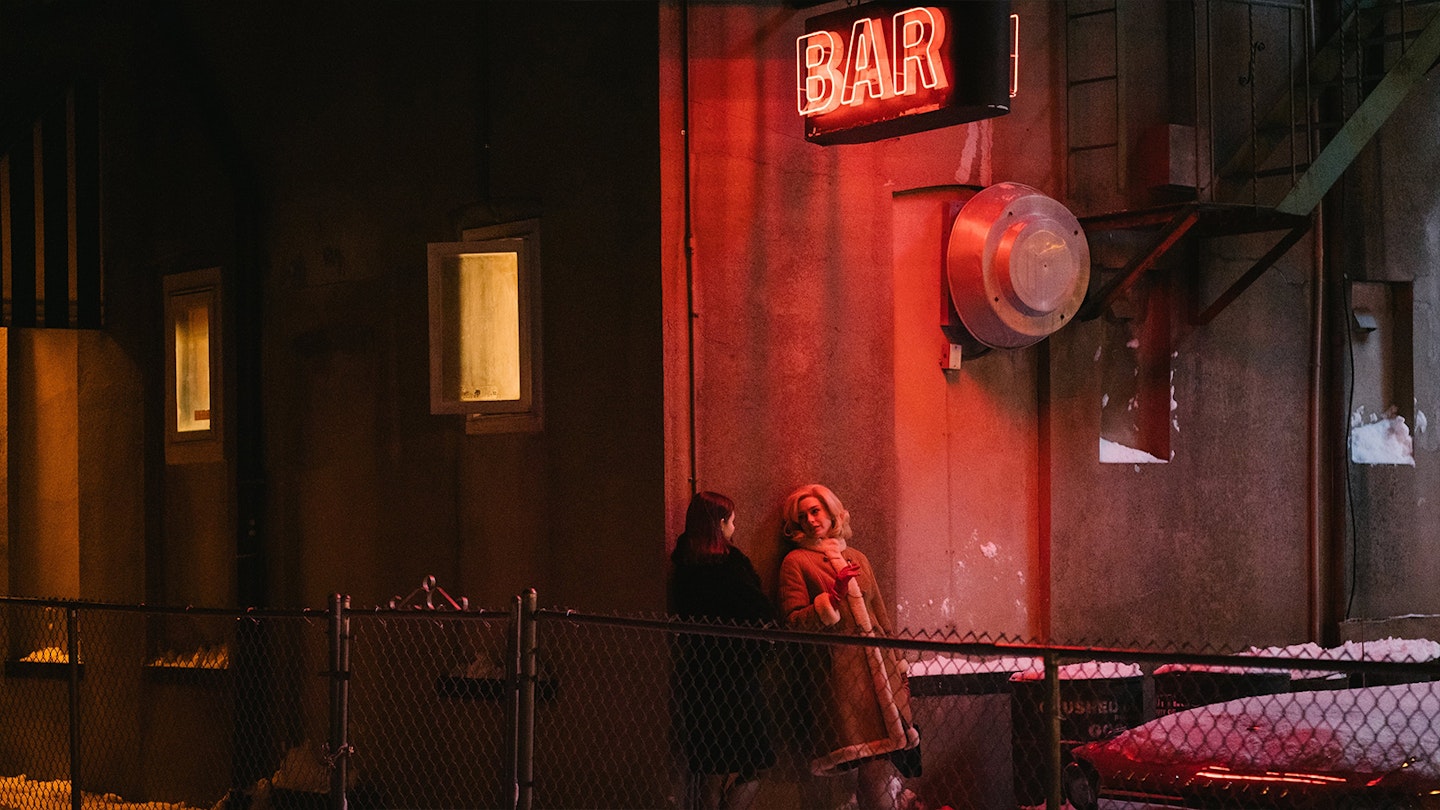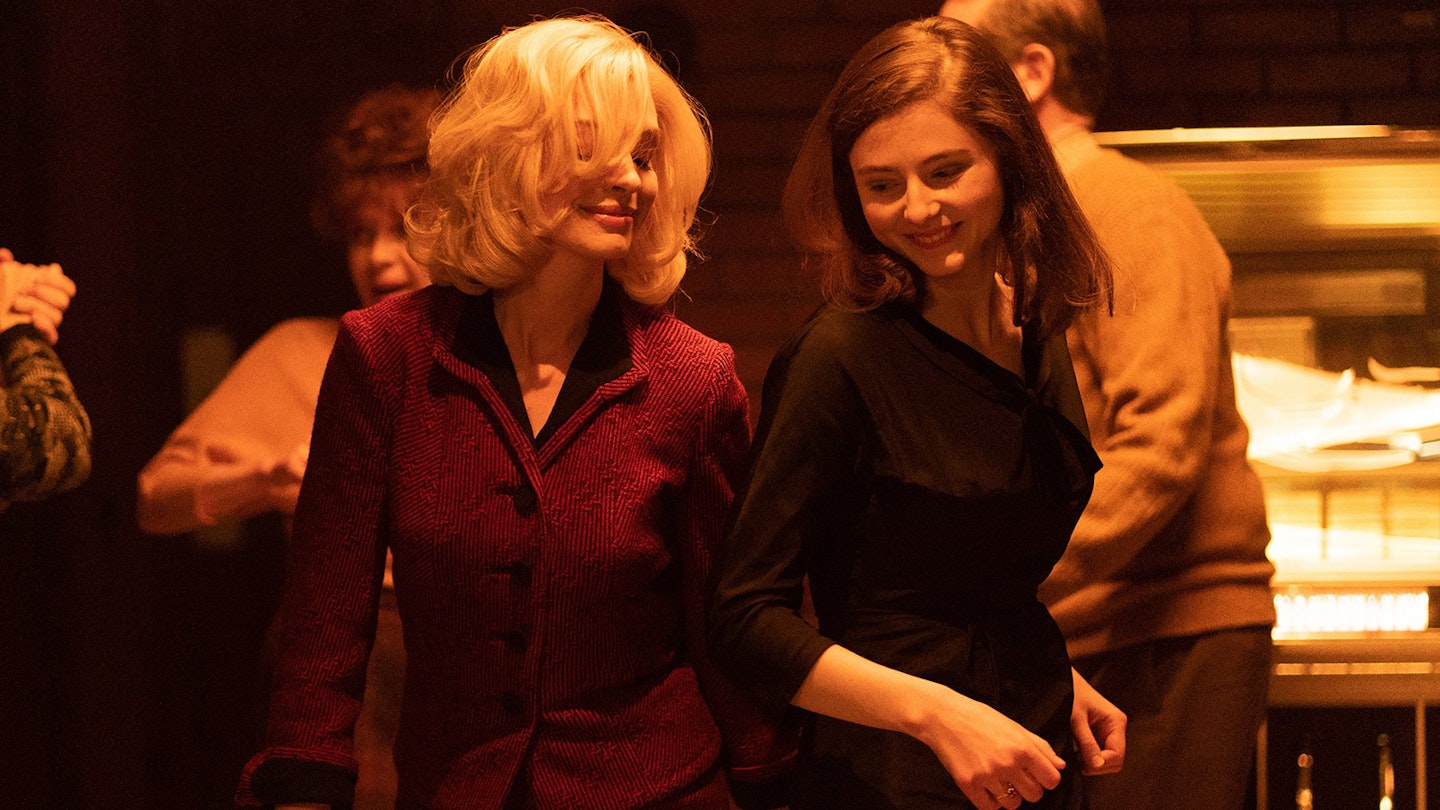There is a sense of entrapment at the heart of Eileen, William Oldroyd’s rather workaday neo-noir based on Ottessa Moshfegh’s 1960s-set novel. The imagery tells us as much, with its many bars and fences and glass partitions. On the outside gazing in is a pinched-looking Thomasin McKenzie, playing yet another fresh-faced naïf ready to be corrupted. How do we know she’s an outsider? She lives in an attic, the safe haven of weirdos and misfits. How can we tell she feels stifled in the drab New England suburb she calls home? Her car fills with suffocating fumes that threaten to choke her every time she drives it.

McKenzie’s Eileen is in a near-constant state of observation, passively watching those around her live, and love. In fact, we first meet her peeping on a couple getting frisky in a fogged-up car, then dumping a handful of snow on her crotch to cool her burning loins. It’s an undeniably flashy opening that sets the stage for lurid psychosexual antics that Oldroyd never really delivers.
Hathaway is magnetic, drawing you in with her sultry, come-hither purr and femme-fatale allure.
He does, however, tease us with them. The film is told from Eileen’s perspective, and her lascivious daydreams — one of which involves rough, public sex with a guard at the boys’ penitentiary where she works — occasionally cut through the narrative. These imagined sequences, which later expand to show her violent impulses, soon grate because they prove more engaging than the plodding ennui which dominates the film — at least until Anne Hathaway shows up.
Her Rebecca is clothed and accessorised to stand out against the film’s deliberately flat, faded design, stepping out of her lipstick-red car in an eye-catching houndstooth coat, jaunty beret and icy, Hitchcock-blonde bob. Hathaway is magnetic, drawing you in with her sultry, come-hither purr and femme-fatale allure. It’s no wonder the mousy Eileen is instantly taken with her. Rebecca is impulsive and worldly and desired — everything that she is not.
The women’s relationship is captivating. The film refuses to indicate whether Eileen wants to be or be with Rebecca, and her obsessive behaviour is left open to interpretation. Eileen groans with sapphic suggestion — a hand on a bare knee, a slow-dance at a bar, a kiss on the mouth under eddying flurries of snowflakes — but this intrigue fizzles out when Oldroyd takes a sharp left-turn into conventional-thriller territory, bulldozing through the subtle character drama and muddying the tone. It’s a disappointing swerve towards an unsatisfying conclusion, especially unwelcome when things were just starting to get interesting.
